Navigating the Atlantic: A Guide for Boat Enthusiasts
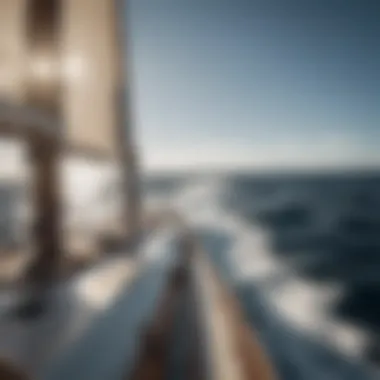

Intro
Embarking on an Atlantic crossing by boat is no small feat. It’s a journey filled with both exciting adventures and a fair share of challenges that can test even the most seasoned sailors. As water enthusiasts seek to navigate this vast expanse, understanding the intricacies involved can significantly enhance their experience. This guide delves into the essential aspects of such an endeavor, including gear recommendations, vital techniques, and tips that any sailor should have at their fingertips.
From the choice of vessel to the subtleties of navigation, every decision plays a pivotal role in how smooth the journey will unfold. The Atlantic is as unpredictable as it is beautiful, making thorough preparation crucial. With the right gear and knowledge, adventurers can minimize risks and maximize the rewards that come with sailing this grand waterway.
Preamble to Atlantic Crossings
Crossing the Atlantic by boat is not merely a test of one's seamanship; it’s a journey that intertwines human history, personal ambition, and the relentless power of nature. Throughout history, the Atlantic Ocean has been both a barrier and a passage, shaping cultures, economies, and landscapes across continents. The significance of this topic lies not only in the adventure it offers but also in its encapsulation of human endurance, ingenuity, and the inherent desire to explore.
Understanding the nuances of Atlantic crossings helps prospective sailors prepare for what is often described as one of the most exhilarating yet demanding challenges in the maritime world. The experience of navigating across vast, unpredictable waters can be rewarding but comes with a laundry list of considerations—be it selecting the right vessel, grasping navigational techniques, or adhering to safety protocols.
Understanding Atlantic Crossings
To truly grasp the intricacies of an Atlantic crossing, one must first understand the fundamental aspects involved. This includes a range of factors such as the choice of a vessel, the preparation required before embarking on the journey, and recognizing the role of weather patterns.
Each crossing can be unique, often influenced by conditions at sea, the skill level of the crew onboard, and the vessel's design. For instance, a sturdy sailing yacht may handle rough seas better than lighter crafts. Therefore, having a clear understanding of these elements is crucial. Every sailor should thoroughly consider not just the thrill of the journey but also the realities and risks that come with it.
Historical Significance of the Atlantic
Historically, the Atlantic Ocean acted as a bridge for explorers, traders, and settlers. From the early voyages of the Vikings to the transatlantic slave trade and the colonization of the Americas, crossings of the Atlantic have defined global exchanges and transformations.
"Journeys across the Atlantic represent more than just miles traveled; they symbolize the spirit of exploration and the transformative power of water."
The significance of these crossings stretches beyond the tangible. They have paved the way for cultural exchanges, trade routes, and even the establishment of nations. Understanding the historical significance adds depth to one’s own journey and reminds sailors that they are part of a long legacy of adventurers who faced the ocean’s vastness.
In embarking on an Atlantic crossing, one doesn't just traverse physical distance; one links their journey to centuries of exploration that have shaped human civilization. As you set sail, remember you are not only navigating waters but also a historical path laid by those who sought the unknown.
Choosing the Right Boat
When it comes to crossing the Atlantic, selecting the right boat is crucial. It’s not just about personal preference; it’s about ensuring safety, comfort, and the overall success of the voyage. The choice of vessel directly impacts the handling of bad weather, fuel efficiency, and even the crew's well-being. So, whether you fancy a calm sail or plan on braving the stormy seas, understanding your options in boat types and configurations is key.
Types of Vessels for Crossings
Sailing Yachts
Sailing yachts are widely recognized for their grace on the water. They thrive on wind power, making them an eco-friendly option that’s also quite romantic for many sailors. One of the standout features of these yachts is their ability to maintain sailing speeds even when things get rough. Their sleek design allows for better maneuverability, which can be a godsend in challenging waters.
However, they do come with some trade-offs. The reliance on wind can be a disadvantage if facing long periods of calm. Beyond that, they usually have less storage space which might become an issue on extended voyages. For those looking for adventure with a touch of traditional sailing, though, they remain a popular choice.
Catamarans
Catamarans present a unique twist on ocean travel. With two hulls instead of one, these vessels offer greater stability—important when crossing the notoriously unpredictable Atlantic. Their spacious decks and living quarters make them particularly appealing for those who might want to spend weeks on board.
One unique aspect of catamarans is their ability to point closer to the wind compared to monohulls, translating to more effective sailing at an angle. However, the initial cost and maintenance of these vessels can be higher. That said, if you prioritize comfort and stability, catamarans are hard to beat.
Motor Yachts
Motor yachts have carved out their niche as reliable alternatives for those less inclined toward the winds or those in a rush. Powered by engines, they don’t depend on the wind, which lets the crew maintain a set course regardless of conditions. This reliability can be a massive bonus during harsh weather or if time is of the essence.
Nonetheless, their fuel consumption can be a bit of a downside, especially on long voyages across vast distances. They often lack the romance that comes with sailing, yet for many, the practicality outweighs the aesthetic appeal. If your journey is purely about reaching a destination with minimal fuss, motor yachts could be the ticket.
Size and Configuration Considerations
Length and Beam
Length and beam often play a significant role in a vessel's performance. A longer boat typically enjoys a faster passage as it can slice through waves more efficiently. Beam, or the width of the vessel, affects stability, particularly when faced with rough seas. It’s worth noting that while wider boats tend to offer more living space, they can also gather more wind resistance.
These dimensions are critical in planning your crossing; they determine how well a boat will handle in various conditions, thus impacting safety and comfort. The balance between length and beam is vital, as a poorly sized boat can lead to unpleasant experiences on the water.
Stability Features
Stability features are another important aspect of boat selection. Particularly for long voyages, it’s essential to have a craft that can withstand the ocean’s whims. Stability can be achieved through design elements like keels and hull shapes. A boat with a deep keel will perform differently from one with a more flat-bottom hull.
In turbulent conditions, excess rolling can lead to seasickness and unsafe situations. Hence, selecting a vessel that excels in stability can make such crossings much more manageable. It’s not just about design; understanding how a boat interacts with the waves can make a huge difference.
Storage and Living Space
Let’s face it: space matters when you're going to spend weeks at sea. Effective storage design can significantly impact your experience. A yacht with ample storage allows for more supplies, which translates to fewer trips for resupply. Additionally, enough living space not only offers comfort but also helps reduce stress during extended ocean escapades.
Also, consider that larger living quarters can promote better morale among crew members. However, the trade-off might be that larger vessels can be harder to manage, especially in tight spots or rough seas. Striking the right balance in storage and space becomes critical to ensure not just functionality but also a more enjoyable experience out at sea.
Planning the Voyage
Planning the voyage across the Atlantic is a critical pillar in ensuring a successful maritime adventure. It embodies the careful consideration of multiple factors that contribute not just to safety, but also to the overall enjoyment and fulfillment of the journey. When a sailor sets foot on a boat, armed with a course chart and a sturdy compass—but without a clear plan—uncertainty can cast a long shadow over the experience. A well-structured plan covers everything, from navigation to provisions, ensuring that all bases are covered.
The significance of planning manifests in a variety of ways:
- Clarity and Direction: A clear itinerary helps in setting expectations. Knowing where one is headed offers not just physical direction but also mental preparedness.
- Resource Management: Understanding how much food, water, and fuel is needed prevents unpleasant surprises in the middle of the ocean.
- Safety Assurance: Preparation can minimize risks. Anticipating potential challenges such as rogue waves or sudden weather changes enhances crew safety.
Having a comprehensive plan lays the groundwork for a smoother experience on the open waters.
Route Selection


Choosing the right route is one of the key elements of the planning process. The Atlantic is wide, and routes vary significantly in their challenges and beauty. Prioritizing popular routes can enhance not only safety but provides an opportunity for sight-seeing and connectivity.
Popular Routes
Popular routes serve as established corridors filled with stories of adventure and lessons learned. For instance, the route from Halifax, Nova Scotia to La Rochelle, France offers a mix of encounters with diverse marine wildlife and picturesque coastal views. This route is favored because:
- Infrastructure: More amenities exist for assistance or resupply at various ports.
- Community: Great sailor networks thrive in these areas, facilitating knowledge sharing and support.
However, one must weigh advantages against potential congestion and commercial traffic, which can introduce unexpected delays or difficulties.
Weather Considerations
Weather is the silent partner in every sea adventure. When it comes to weather considerations, understanding the prevailing conditions can make or break a crossing. Factors such as wind speeds, storm patterns, or fog can dramatically alter a journey. Key features of weather considerations include:
- Forecasting Tools: Modern tools allow sailors to track weather trends effectively, aiding in decision-making and route adjustments.
- Safe Passage: Recognizing calm vs. turbulent areas helps in seeking safe passages.
The downside is that weather is inherently unpredictable. While forecasting may provide insights, sudden changes can always present risks.
Seasonal Impacts
The season you choose to cross can hugely impact the journey. Seasonal impacts like hurricane season or the winter months can dictate the level of risk sailors might face. Choosing these periods thoughtfully can yield:
- Optimal Conditions: Sailing during spring or summer can lessen the chance of encountering adverse weather conditions.
- Wildlife Sightings: Timing your journey can also enhance the experience with seasonal wildlife migrations.
On the flip side, sailing during peak seasons may also mean more crowded seas and higher costs for services. Choosing the timing of your voyage requires weighing the benefits against potential drawbacks in a clear-eyed manner.
Timeline and Duration
A well-thought-out timeline is another vital component of the planning phase. Setting realistic expectations about how long a crossing will take aids in preparing for the journey mentally and logistically.
Estimating Travel Time
Estimating the travel time necessary to reach your destination is not merely a mathematical task. It has implications for provisions and yacht maintenance. A rough estimate takes into account:
- Speed Calculation: Taking into account boat speed and likely conditions helps in creating a softer timeline.
- Stops: Deciding whether or not to make stops ensures that you have planned enough allowances for such interruptions.
However, it’s worth noting the inherent unpredictability of ocean travel; local weather could delay arrival.
Factors Influencing Duration
There are several factors influencing duration that go beyond just the initial travel time estimate. Your boat, crew experience, and external circumstances all play a role. Considerations include:
- Boat Performance: The vessel's design and load factor can greatly influence speed.
- Experience Level: An experienced crew may navigate their route more efficiently, unlike a less seasoned team.
These aspects highlight a greater challenge—the ocean often does not adhere to human timelines, and flexibility becomes paramount.
Evaluating each of these factors will pay dividends as one embarks on the complex yet rewarding journey of crossing the vast Atlantic.
Safety at Sea
When navigating the vast and unpredictable waters of the Atlantic, the importance of safety cannot be overstated. From preparing for the unexpected to ensuring that all on board are adequately equipped for emergencies, every sailor must prioritize safety to have a successful traverse. With the potential for swift weather changes and unforeseen obstacles, understanding what it takes to stay safe on the high seas is not just a matter of comfort; it's crucial to survival.
Essential Safety Gear
Life Jackets and Rafts
When it comes to life jackets and rafts, having the right equipment on hand is a game changer. Life jackets are mandatory on all vessels; they serve as the first line of defense in case of man overboard situations. One of the key characteristics of modern life jackets is their buoyancy and visibility. Many are designed with bright colors and reflective strips, making it easier to identify a person in distress from a distance. Not only do they offer flotation, but they can also come equipped with additional features like whistles or lights, which further contribute to safety by enhancing visibility at night.
Inflatable rafts are another vital safety component. Unlike traditional lifeboats, they're compact and can be stored easily aboard. Upon deployment, they provide immediate flotation and shelter from harsh weather conditions. It's crutial to ensure that these rafts are adequately maintained and packed with essential items such as waterproof flares and signaling devices.
Advantages of these safety gears include increased survivability and peace of mind, knowing you’re equipped for emergencies. Conversely, some might argue that life jackets can feel cumbersome, especially when worn for extended periods, but the benefits outweigh the inconvenience. Preparing properly with these tools can mean the difference between life and death during any haunting crossing.
Emergency Beacons
Emergency beacons are invaluable tools when disaster strikes. Equipped with satellite technology, these beacons can transmit distress signals, alerting rescue services to your exact location. The primary characteristic that sets emergency beacons apart is their ability to work even when all else fails. For those voyaging far from land, having a beacon means you can summon help when the chances of rescue would otherwise dwindle.
Its unique feature is the activation method – many modern beacons can be deployed simply by pulling a pin, allowing for instant use in dire situations. Though relatively simple devices, their role in maritime safety is profound, as they drastically reduce search times for trapped sailors. The most significant drawback is that they require a battery, so ensuring power is maintained is a must to remain effective, but the reliability they offer makes them a critical piece of safety gear.
First Aid Kits
With sudden accidents possible at sea, maintaining a well-stocked first aid kit is non-negotiable. A good first aid kit includes supplies needed for treating everything from minor scrapes to more serious injuries one might encounter on a long voyage. The best kits will be complete with items like antiseptic wipes, adhesive bandages, and even splints for emergency stabilization. Key characteristics include durability and waterproof packaging that ensures the integrity of their contents.
A unique feature of some first aid kits is the inclusion of instructional guides, which can be invaluable for those who might not be medical savvy. This practical knowledge can empower crew members to take action under pressure. The advantages of being properly equipped are clear—lessening the impact of a medical emergency significantly boosts the crew's chance of maintaining morale and getting through a difficult situation, although ill-prepared kits can lead to critical setbacks.
Training and Preparation
Safety Drills
Regular safety drills can seem like a chore, but they are crucial for smooth operations at sea. Familiarity with safety protocols ensures that everyone knows how to react in emergencies, which can make the difference between chaos and effective response. They're beneficial because they help to build teamwork and improve confidence among crew members. One unique feature of effective safety drills is their adaptability; different emergency scenarios can be simulated to prepare for any possible situation one might face during the crossing.
Although some might see drills as unnecessary, especially for more seasoned sailors, complacency can lead to oversight and potential danger. Emphasizing the importance of being well-rehearsed cannot be stressed enough in the context of safety at sea.
Navigation Training
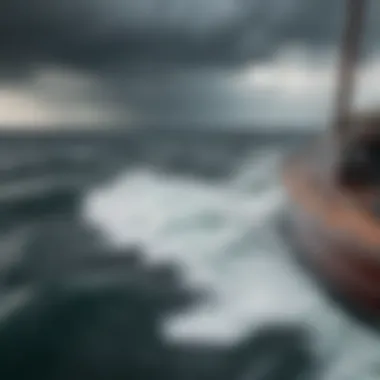
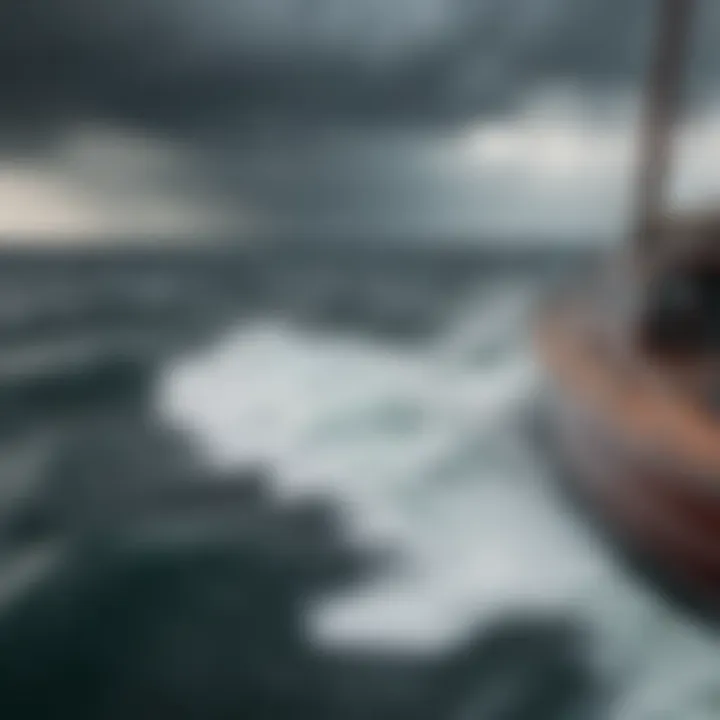
Proper navigation training goes hand in hand with ensuring safety. Mastering the various navigation techniques gives crews the ability to maneuver effectively, even under duress. Such training includes the understanding of celestial navigation, as well as modern tools like GPS. One key benefit of this type of training is it builds confidence in one's ability to steer the course correctly, regardless of the conditions. As technology advances, some might argue that reliance on GPS can be a double-edged sword; in case of electronic failure, traditional skills can provide a vital fallback.
Employing both navigation methodologies means that the crew can handle a wider array of situations, ensuring that their journey doesn’t veer off course due to simple navigational errors.
Weather Briefings
Weather briefings are an essential part of preparation that can not be overlooked. With changing weather patterns being a largely influential factor in determining safe passage, understanding weather conditions is vital. Sailors should stay aware of forecasts and ensure they're familiar with meteorological terms and phenomena. Incorporating this into your planning means that crews can adapt their route or strategy based on potential threats.
A unique feature of modern weather briefings is their accessibility; many sailors can rely on satellite communication or mobile apps to receive real-time updates, thus maintaining a constant awareness of shifting conditions. Conversely, a major challenge can arise if sailors disregard or misinterpret weather briefings, which can lead to dangerous expeditions without necessary precautions taken.
Ensuring a thorough understanding of weather patterns is an indispensable part of safety for every Atlantic crossing.
Navigational Techniques
Navigational techniques stand as the backbone of any successful Atlantic crossing. Whether plotting a course through calm waters or navigating treacherous seas, having a keen grasp of various navigational methods is essential. Each sailor must understand the techniques available, weighing both traditional and modern strategies for their journey. The right technique enhances confidence, optimizing safe passage and efficiency.
Traditional Navigation Methods
Celestial Navigation
Celestial navigation involves using the positions of stars, planets, and other celestial bodies to determine one’s location at sea. This technique has been around for centuries, with mariners relying on the sun and stars to find their way across vast oceans. The key advantage of celestial navigation is that it doesn't depend on modern technology—it requires merely a sextant and knowledge of the stars. This makes it particularly valuable during prolonged periods away from land, where technological devices might fail.
A notable aspect of celestial navigation is its focus on the heavens, allowing sailors to connect with the natural world in a profound manner. However, it can be tricky; factors such as weather and horizon obscuration can create challenges, and it demands both skill and practice. Still, in our age of rising tech dependence, preserving traditional navigation skills provides reassurance to many sailors.
Dead Reckoning
Dead reckoning is another foundational navigation method that estimates one's current position based on a previously determined position. This technique factors in speed, time, and course direction to project where the vessel will end up. The primary characteristic of dead reckoning is its simplicity, making it an accessible way for sailors to keep track of their journeys, particularly when visibility is low.
However, dead reckoning isn't without its flaws. Drift from currents and winds can cause significant discrepancies in one's projected location, making this technique less reliable over longer distances. Yet, many seasoned mariners still employ dead reckoning in conjunction with other methods to create a more comprehensive navigational strategy.
Modern Navigation Tools
GPS Systems
In present-day sailing, GPS systems have revolutionized navigation by providing real-time position data with remarkable accuracy. Sailors can now find their exact location through a constellation of satellites, leading to a much more effective navigation experience. The primary strength of GPS is its speed and reliability, as it eliminates the guesswork inherent in older techniques.
However, while GPS systems offer significant advantages, they are also sometimes criticized for fostering a degree of reliance on electronic devices. A dead battery or technical failure can leave a sailor stranded. Therefore, it’s crucial to balance the use of GPS with fundamental navigational skills, ensuring one doesn’t become overly dependent on technology.
Chart Plotters
Chart plotters take the capabilities of GPS a step further. These electronic devices allow sailors to visualize their navigational charts, making it easier than ever to plot a course and track progress. Chart plotters compile various navigational data, presenting it in a clear and intuitive format.
Notably, chart plotters can help identify hazards such as shallow waters, rocky outcrops, or other vessels. However, these devices draw their information from pre-loaded data, meaning that dependency on them poses risks if updates are not regularly maintained. Sailors must remain vigilant, ensuring that they don’t overlook critical environmental cues while navigating.
Electronic Navigation Aids
Electronic navigation aids encompass a wide range of tools, including radar and sonar systems. They provide valuable information about surrounding environments, aiding sailors in making informed decisions. One distinct feature of these aids is their ability to handle complex data, presenting crucial information on collisions and changes to weather patterns.
The broad range of electronic navigation aids offers immense advantages for sailors, particularly during low visibility or challenging conditions. However, like all technology, they come with the risk of failure or malfunction, making it important for sailors to ensure they have backup systems or traditional navigation skills at their fingertips.
"Every sailor must find the balance between embracing new technologies and staying grounded in traditional skills. It’s this blend that ensures safety and success on the water."
In summary, mastering navigational techniques—both traditional and modern—remains pivotal for anyone preparing to cross the Atlantic. Each method and tool brings its unique lenses for understanding the maritime world, shaping the experience of voyagers seeking adventure.
Environmental Considerations
Understanding the environmental dimensions of crossing the Atlantic is crucial, especially in today’s world, which is increasingly conscious of sustainability and the impacts of human actions on nature. The vastness of the ocean comes with its own set of challenges and considerations that can greatly influence the success and safety of any voyage. Balancing the desire for adventure with a respect for marine ecosystems enhances not only the journey but also its long-term viability. Ignoring these factors can lead to irreversible damage, hence the need to delve deeper into understanding the environment during such crossings.
Weather Patterns
Weather patterns play a monumental role in any maritime endeavor. Their unpredictability can shape a journey in ways one might not anticipate.
Understanding Storm Trends
Understanding storm trends is essential for any sailor. Storms at sea can appear suddenly and without warning, making them a significant concern during an Atlantic crossing. Successfully anticipating these patterns allows sailors to avoid dangerous situations, making it not just a matter of comfort but of safety.
What underpins the importance of knowing storm trends is how they often behave cyclically based on seasons. For instance, during summer and early autumn, hurricanes may form in the Atlantic, presenting notable risks. Having a grasp of these trends can lead to safer voyages by timing the crossings accordingly. One unique feature of storm trends is their ability to shift with climate change, thus making prior knowledge somewhat obsolete; adapting to new information becomes vital. Those who understand these changes can take advantage of them, ensuring smoother sailing and fewer surprises.
Using Weather Forecasting Tools
The use of weather forecasting tools has become indispensable for maritime travelers. These tools, ranging from simple apps to sophisticated marine weather services, provide crucial data that helps in decision-making. The ability to access real-time information can significantly change a sailor’s course, giving them the means to avoid inclement weather.
The key characteristic of these tools is their capacity for real-time updates, which plays a vital role when crossing such expansive waters. One cannot overstate how beneficial being prepared with accurate forecasts can change the trajectory of a crossing, potentially turning what could be a perilous endeavor into a safe and swift passage. However, reliance on technology has its downside; sailors must not forget to integrate their understanding of weather patterns with these tools to make informed decisions.
Marine Ecosystems
As travelers navigate the majestic waters of the Atlantic, they inadvertently interact with complex marine ecosystems. Understanding these ecosystems is indispensable for promoting responsible sailing practices that minimize human impact on marine life.
Impact of Human Activity
The impact of human activity on marine ecosystems cannot be ignored. From pollution to overfishing, human actions have etched considerable marks on the natural world. For sailors, appreciating this dynamic is key for fostering harmony between exploration and conservation. This awareness contributes to developing more sustainable practices during crossings.
One key aspect of this is understanding how specific travel habits can either contribute to or hinder marine health. For example, the use of biodegradable products, proper waste disposal, and abiding by fishing regulations can significantly lessen the negative effects. Sailors often overlook how even small actions, like using excessive fuel, can have long-term repercussions on water quality.
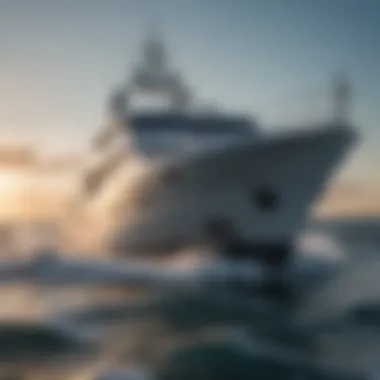
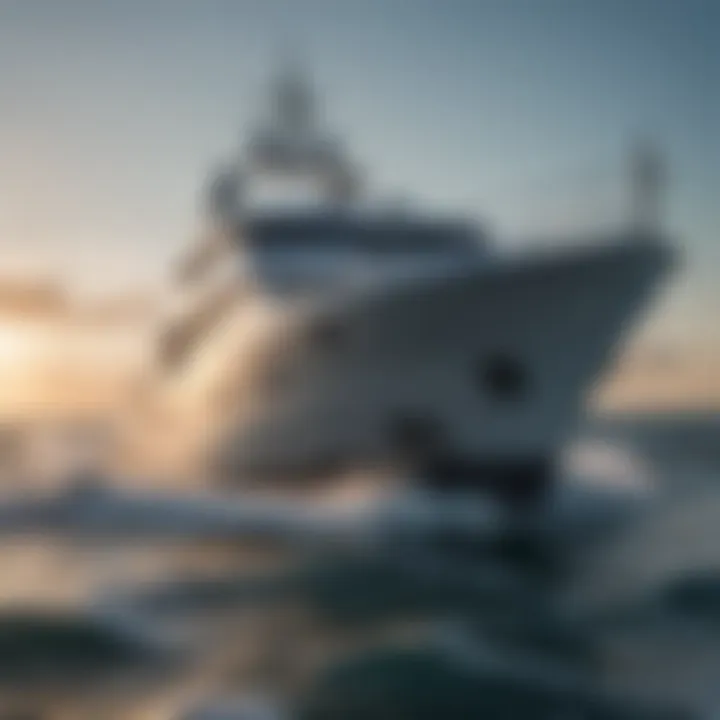
Wildlife Awareness
Wildlife awareness forms a critical aspect of responsible sailing. Recognizing that many species thrive in the ocean’s depths creates a richer experience for sailors while promoting conservation. Certain migratory patterns of whales, dolphins, and other marine animals can alter routes or lead to encounters that enrich voyages.
Highlighting the need for sailors to be vigilant about wildlife, this awareness can lead to more rewarding experiences. Sailors who actively look out for marine animals become ambassadors for marine conservation, often sharing their stories and encouraging a culture of respect among fellow ocean enthusiasts. However, getting too close can disrupt habitats and harm the wildlife, a delicate balance that sailors must navigate while reveling in the beauty of their surroundings.
"The ocean is a living entity, full of mysteries waiting to be unraveled. Engage with it responsibly."
In summary, navigating the Atlantic goes beyond mere distance traveled and instead unfolds a narrative intertwined with environmental considerations. Understanding interactions with weather, marine ecosystems, and the implications of human activity fosters an awareness that enhances not only the journey but the world around us.
Psychological Aspects of Long Voyages
When you're out there on the wide blue ocean, the psychological challenges can be as daunting as any storm. This section delves into these complexities, highlighting how important mental resilience is during long Atlantic voyages. Whether you’re a seasoned sailor or embarking on your first grand adventure, understanding the psychological nuances can significantly impact your overall experience.
Voyaging across the Atlantic isn't just about navigation and weather forecasts; it’s also a mental game. Navigating isolation, managing personal relationships on board, and maintaining morale are all critical factors. The benefits of addressing these aspects include improved crew cooperation, enhanced decision-making in challenging situations, and a more fulfilling quest out on the water.
Coping with Isolation
Staying Connected
Staying connected is vital to mitigating the feelings of isolation that can creep up on sailors during long voyages. In an age where technology is king, it should come as no surprise that enhancing communication plays a key role in improving mental well-being at sea. Installing satellite phones or using radio waves can keep a sailor in touch with loved ones.
The key characteristic of staying connected is the emotional uplift it brings. It can be a beacon of light on murky waters. The unique feature here is the reassurance that comes from hearing familiar voices, sharing experiences, or even discussing mundane daily matters. However, it’s not without its downsides. Depending on technology can sometimes lead to distraction, pulling attention away from the immediate environment and the task at hand. Thus, while staying connected is a lifeline, it demands a balanced approach.
Establishing Routines
Establishing routines is another psychological anchor for sailors. When the sea rolls beneath, creating daily habits can help manage time and reduce the feeling of chaos. Typical routines often involve specific meal times, designated watch rotations, and structured leisure activities. This sort of predictability can be comforting in a world that feels uncontrollable.
The key characteristic of establishing routines is their ability to transform overwhelming feelings into manageable chunks. It offers sailors a sense of normalcy amid the vast and unpredictable ocean. A unique feature of this practice is how it fosters collective engagement; it binds crew members together in shared activities, reinforcing team spirit. One drawback to point out, however, is that strict adherence to routine might stifle spontaneity, which in turn might limit enjoyment of the unexpected joys the ocean brings.
Team Dynamics
Navigating the social fabric aboard a boat is just as essential as steering the vessel itself. The dynamics between crew members can make or break the experience. Trust and collaboration play a crucial role here, and addressing team dynamics can ensure that isolation is less overwhelming.
Effective Communication
Effective communication serves as the backbone of good team dynamics. On a boat, crew members need to relay information quickly, whether it's about navigation, safety, or simply the state of the weather. Establishing clear channels and expectations for communication can mitigate misunderstandings that could lead to conflict.
The key characteristic of effective communication is its role in building trust. When crew members feel comfortable expressing concerns and sharing information, it fosters a cooperative environment. The unique feature of this communication is its adaptability; messages often change based on weather conditions or navigational challenges. While this can lead to flexibility, it also requires ongoing effort from all parties to ensure that no one feels left out of crucial decisions.
Conflict Resolution
Conflict resolution becomes vital as personalities inevitably clash over the course of a long voyage. Establishing tools for conflict resolution can help avoid it snowballing into larger problems.
A key characteristic of effective conflict resolution is the emphasis on understanding perspectives rather than merely seeking compromise. This approach can turn disagreements into learning opportunities. The unique aspect here is the emphasis on collective problem-solving, which can unite a crew. However, some crew members might find the process uncomfortable, and the reluctance to address conflicts can lead to unresolved tension that affects the entire voyage.
By weaving these elements into pre-voyage planning and ongoing interactions, sailors can create a more harmonious and rewarding journey.
Post-Crossing Reflections
Post-crossing reflections serve an essential role in the overall process of crossing the Atlantic by boat. This time for contemplation and evaluation is not just a moment of rest; it stands as an opportunity to assess experiences and outcomes that can significantly influence future journeys. After navigating through challenges and triumphs, taking time to reflect can deepen one’s understanding of the voyage, enhance skills, and foster deeper connections amongst the crew or fellow adventurers.
Engaging in post-crossing reflections can also strengthen one’s resolve to embark on further nautical adventures.
Evaluating the Experience
Learning Outcomes
The concept of learning outcomes refers to the insights and knowledge gained through the experience of crossing the Atlantic. Learning outcomes serve as tangible evidence of personal growth and development. They contribute to the broader understanding of what it means to sail the open water. Throughout this article, the emphasis on assessing learning outcomes highlights their importance in perfecting sailing skills, decision-making, and enhancing safety awareness.
A key characteristic of learning outcomes is their role in promoting critical self-assessment. Individuals often come back from the journey wiser and more adept at problem-solving. This reflective process can transform fears and uncertainties into a foundation of experience.
One unique feature of learning outcomes is their ability to impact future voyages. Understanding areas of improvement, like managing stress at sea or optimizing equipment usage, allows sailors to be better prepared. The advantages of focusing on learning outcomes include the acquisition of invaluable knowledge, while a disadvantage might be the emotional weight of confronting setbacks.
Future Expeditions
When it comes to future expeditions, the reflections drawn from an Atlantic crossing can play a pivotal role. They provide a launching pad for increased confidence and ambition, motivating sailors to take on more challenging routes or longer voyages. Future expeditions build upon past experiences, steering adventurers towards achieving greater goals and unlocking new adventures.
A central aspect of future expeditions is the willingness to explore uncharted waters, in both a literal and metaphorical sense. This tendency fosters a spirit of exploration, encouraging sailors to push boundaries and expand horizons, enriching their boating narratives.
One advantage of focusing on future expeditions is the sense of excitement and purpose it instills. However, the unique aspects of such journeys often come with considerations of risk that require evaluation. High-stakes environments may not suit everyone, and departing from familiar routes can be daunting for many.
Sharing Stories
Writings and Blogs
Writings, whether through personal journals, blogs, or published articles, can create a vital link between adventure and reflection. These written records are not merely narratives; they offer insights into personal challenges overcome and the joy of exploration on the seas. Sharing experiences through written formats helps individuals process the adventure while also contributing to the broader boating community.
A notable characteristic of writings and blogs is their accessibility. Anyone can publish their stories online, making it easier to connect with fellow adventurers and share wisdom. The benefit of this medium is the legacy it creates, preserving moments that might otherwise fade. However, there can be a downside, such as potential oversharing or misrepresentation of experiences, leading to unrealistic expectations among readers.
Documenting the Journey
Documenting the journey through photographs, videos, or other media allows for a more comprehensive portrayal of the Atlantic crossing. This practice enriches storytelling beyond mere words, capturing the essence of defined culture, the beauty of nature, and the challenges faced while out at sea. By going beyond surface-level details, such documentation creates a vivid experience that can resonate across audiences.
A key characteristic of documenting the journey is the visual impact it provides. The fantastic allure of visuals, be it dramatic ocean sunsets or candid crew moments, can transcend words, drawing people into the narrative.
One unique feature is the ability to reflect on these materials later; photographs and videos become a treasure trove of memories, sparking nostalgia and inspiring future voyages. Advantages here include the promotion of shared experiences as communities may bond over similar maritime paths. However, managing the quality and expectations of such documentation might pose challenges, given the wide variety of content standards among different creators.
The experiences captured through sharing stories and documenting journeys not only enrich the individual's narrative but also serve as a guiding light for future nautical adventurers seeking to navigate similar waters.















